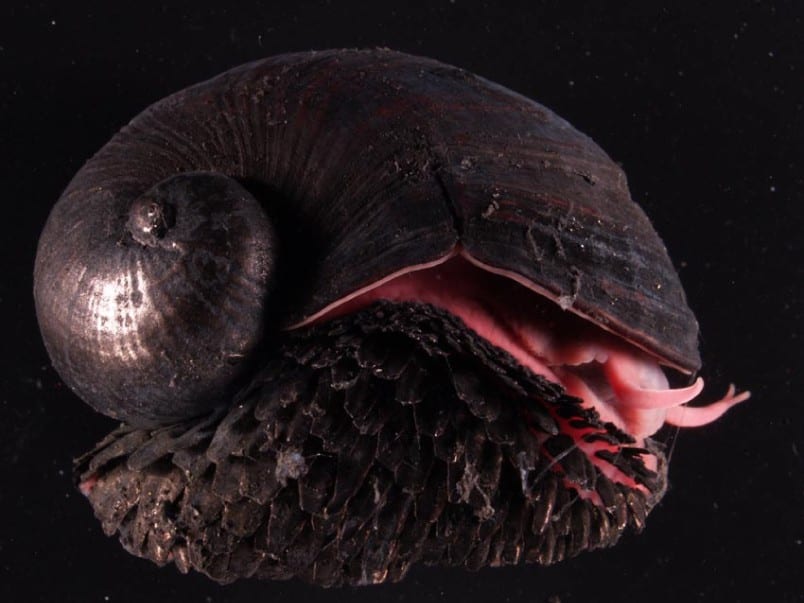It sounds like something straight out of fiction: a snail with an iron shell that doesn’t need to eat. While the idea of a volcano snail may sound like a Pokémon (and the concept does exist in the franchise with Slugma and Magcargo), Chrysomallon squamiferum, also called the scaly-foot gastropod, scaly-foot snail, or the sea pangolin, is a real creature. It lives in deep-sea hydrothermal vents in the Indian Ocean. As explained in an April 2015 article in the Journal of Mollusk studies by Chong Chen, Katrin Linse, Jonathan T. Copley, and Alex D. Rogers, the species was discovered during a 2011 expedition by the RSS James Cook.
The creature’s biology is massively fascinating. Its shell has three layers: the outer layer is made of iron sulfides, making it the only known extant creature that incorporates such substances into its skeleton. The middle layer is standard gastropod fair, composed of an organic substance called periostracum. Finally, the innermost layer is made of aragonite, a carbonate mineral that can also be considered a gemstone. Thanks to a symbiotic relationship with bacteria in its digestive system, the volcano snail doesn’t need to eat– the bacteria provide the snail with energy in exchange for being able to live in the snail’s body. Another cool biology fact about the volcano snail is the size of its heart, as it represents 4% of its body volume, which is rather big for such a small animal. Its heart is so big to ensure that both it and its bacteria friends get enough oxygen in the low-oxygen environment of the deep sea.
The scaly-foot gastropod is considered endangered by the IUCN Red List due to risks from deep-sea mining of its natural habitat. It is the first species to be listed as endangered for this reason.













